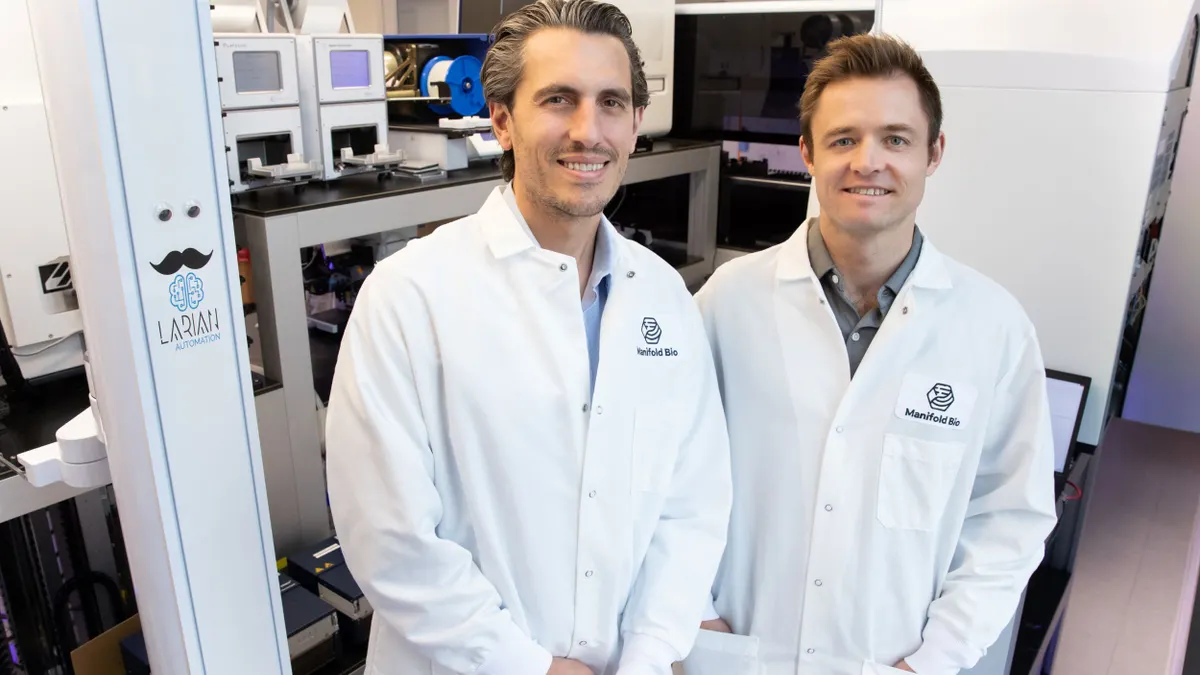For many of us, it’s fair to say that 2021 didn’t exactly go as planned. (Remember when we thought the pandemic might end?) Naturally, pharma has pivoted to meet this ongoing challenge.
With 2021 now in the rearview, pharma is gearing up for the road ahead. It's clear that COVID will still impact life as we know it — including pharma — but there are several other market factors driving changes and trends in the industry. So, what’s on the minds of pharma’s thought leaders as we round the corner into 2022?
For this first installment of our ongoing series, “PharmaVoice Forecast,” which will feature insights from our community of executives in the industry, we posed this question: What are the most immediate, short-term strategic imperatives, challenges, or trends you are tracking?
Here’s what several biotech executives flagged as the emerging opportunities and upcoming frontiers of the life-sciences industry:
The stock market will need to be tracked
"The patient journey post-COVID and returning to 'normal' is where my focus is. As a young public company, the volatility in the stock market — influx of small traders — is also a major trend to be better understood." ~Al Altomari, chairman and CEO, Agile Therapeutics, PharmaVoice Red Jacket
Anti-viral drugs and robust testing will move COVID into the 'endemic' phase
"Our focus over the next six months will continue to revolve around COVID-19. The expectation is that COVID-19 will move to an endemic phase where it becomes one of the standard circulating viruses.
At the same time, there is an expectation of one or more oral anti-viral drugs being authorized for treating COVID-19. How governments, businesses and individuals decide the importance of detection and treatment of COVID will have a significant impact on the role of testing and type of tests that are used. If oral treatments for both COVID-19 and influenza were available to reduce infection duration and severity, timely and accurate tests will be crucial to differentiate the causative virus." ~Jeff Fischer, president, Longhorn Vaccines & Diagnostics
mRNA will be used for more than COVID
"The trends that I am tracking right now are halting the COVID epidemics, protecting the world, and convincing people that vaccines are only good. There are no bad sides to opt for the vaccine, which is a rarity for most drugs and remedies.
The technology of mRNA vaccines will also be a breakthrough for cancer vaccines as therapeutics, where peptides mimicking cancer mutations encoded by mRNAs, potentially injected in muscle like the COVID vaccine, will help our body fight cancers in a precise and not harmful way. This is an obvious and tremendous opportunity, a whole new frontier." ~Carla Grandori, co-founder and CEO, SEngine Precision Medicine
Next-generation mRNA is on the way
"We are developing a next generation of mRNA vaccine technology — self-amplifying messenger RNA (sa-mRNA). mRNA vaccines work by giving the body instructions to make a protein, stimulating the body’s immune response and leaving a blueprint to recognize and fight future infection. sa-mRNA gives the body instructions to replicate mRNA and amplifies the amount of protein made, with the potential to use less antigen.
In the short term, we’re continuing to evaluate the safety and effectiveness of the first-generation mRNA technology in vaccines such as COVID-19. This will provide important insights as we continue the development of our next-generation sa-mRNA platform. sa-mRNA technology has demonstrated the potential to use lower doses than mRNA-based vaccines and generate similar or better responses in animal models. The potential to use lower doses means that vaccines requiring multiple antigens could be more readily generated and potentially have fewer effects." ~Ethan Settembre, vice president and head of Research, Seqirus
CAR-T will be developed to fight solid tumors
"The promise of CAR-T cell therapy to target solid tumor cancers is an important emerging trend. Recently, we shared some of the best anti-tumor responses for a CAR-T therapeutic in a solid tumor indication when we announced encouraging preliminary data on P-PSMA-101, a Phase 1 CAR-T therapy product candidate for patients with metastatic castrate-resistant prostate cancer.
Now that we have demonstrated that CAR-T can be successful against solid tumor indications, the next goal is to demonstrate the competitive advantages of our approach in fully allogeneic or off-the-shelf CAR-T therapies. Our first allogeneic product candidate, P-BCMA- ALLO1 for multiple myeloma, has already received IND clearance from the FDA. Our second allogeneic candidate, P-MUC1C-ALLO1, builds on our solid tumor success as it is intended to treat numerous solid indications and has an IND submission slated for later this year." ~Eric Ostertag, CEO, Poseida Therapeutics
The pipeline for cell and gene therapies will continue to grow
"One of the most pressing strategic imperatives we’re focusing on is positioning ourselves to support the proliferation of new cell and gene therapies. Several years ago, we had the foresight to think about cellular therapy beyond just bone marrow and stem cell transplantation. We created Be The Match BioTherapies to capitalize on the assets and capabilities we’ve built in our 30-plus year history, allowing us to extend our reach to therapy developers who are going after the same indications with new therapeutic approaches (e.g., CAR-Ts). I see this as a critical part of our future and a way to extend our mission to serve more patients.
We are now at a critical inflection point, because client activity is increasing, and the pipeline of both autologous and allogeneic therapies is growing exponentially. We are laser focused on ensuring our operations are scalable in support of these new therapies for patients." ~Julie Smolich, senior vice president, Provider Services, National Marrow Donor Program/Be The Match
The industry will need to confront drug pricing challenges
"We see a real challenge lying at the intersection of healthcare cost rationalization and the extreme cost of certain novel technologies. In terms of the evolving technological evolution, there is a risk that the industry could become a victim of its own success. This also applies to the way in which a treatment population may be narrowly defined within genetically defined disease sub-sets or rare diseases, leading to high costs.
While I am not certain any legislative changes will emerge in the near term; the industry simply will have to face this conundrum in the long term." ~Matthew Price, co-founder and chief operating officer, Phosplatin Therapeutics
Sign up for our newsletter to catch more installments of PharmaVoice Forecast, which will feature executive insights on the trends and issues transforming pharma.



















